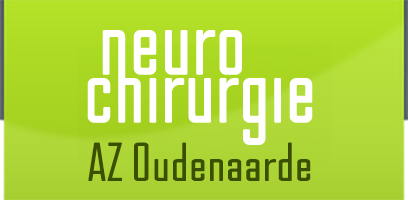Medical problems with the brain / skull
Brain tumours
Multidisciplinary approach for better treatment and care
In the OLV Hospital, brain tumours but also tumours in the spinal cord for instance are always treated by a multidisciplinary team. Several specialists (neurosurgeon, neurologist, oncologist, radiologist) convene at regular intervals for a multidisciplinary oncological consultation ('MOC') to discuss the condition and treatment of individual patients. This warrants the best possible treatment and follow-up.
In addition, every patient can count on excellent personal care from a high-quality paramedical team (with specialised nurses, a psychologist...).
Medical care trajectory for a personal treatment of every patient
The whole treatment is carefully worked out as a ‘medical care trajectory', during which the patient can count on sound, evidence-based medical advice, personal information and close monitoring in every stage of his/her treatment (referral stage, diagnostic stage, treatment stage and follow-up stage).
Wakeful brain surgery
Our brain is the control centre of our body. It controls all our bodily functions. It is thus very important to proceed very carefully during brain surgery so that no important areas are affected (think of speech centres or motor centres performing the movements of arms, legs and face). If a tumour is situated close to these areas, the neurosurgeon will in consultation with the patient opt for a wakeful intervention during the surgical operation for which the patient is awakened so that he/she can carry out simple instructions.
The way in which the brain works and is organised is different for every individual person. For instance, there is already a major difference between left- and right-handed patients. But the lesion or tumour may also shift the control areas in the brain. That's why an individual high-precision approach is crucial.
Using a functional MRI, the different areas of the brain are mapped for every individual patient (mapping and highlighting the areas controlling movements or speech). This mapping can, for instance, be done by having the patient move his/her hand or by testing his/her speech.
But this mapping technique does not give a 100% accurate image of the dangerous brain areas. Accordingly, it is necessary to locate critical areas extra accurately while the patient is awake so that he or she can carry out instructions with his/her hands and fingers, arms and legs and/or face. In addition, the patient must perform several speech exercises. The wakeful part of the operation takes one and a half to two hours.
The main benefit of this way of surgery is that during the operation one has direct control over dangerous areas of the brain so that the risk of permanent damage remains restricted to an absolute minimum. Besides, by combining all different imaging techniques, mapping and wakeful brain surgery, it is now possible to operate tumours that used to be inoperable.
Video (not for sensitive viewers)
Treatments
Resection/biopsy
Depending on the size and location of brain tumours, surgeons can opt for a resection or biopsy.
During a biopsy, a small piece of tissue is removed using a special biopsy needle to examine whether the tumour is benign or malignant.
When it is possible to remove a brain tumour, this is called a ‘resection'.
Both taking the biopsy and performing a resection are done through neurological navigation, which makes the intervention very accurate (computer-controlled).
Stereotactic radiation therapy (radiosurgery)
Radiosurgery or stereotactic radiation therapy is often applied in neurosurgery. This technique allows to treat smaller tumours, abnormalities in the blood vessels or metastases without having to remove the skull during surgery. Radio surgery is a once-only high-precision treatment during which a very high dose targets with extreme precision the tumour or blood vessel abnormality without damaging surrounding tissue.
Pioneers in Belgium
Together, the radiotherapy (led by Dr. Verbeke) and neurosurgery team of the OLV Hospital in Aalst have more than 30 years of experience in radiosurgery. This turns them into pioneers in Belgium in this area of expertise. Radiosurgery is teamwork and is executed as a team by experienced specialists including your neurosurgeon, a radiotherapist, physicist and neurological radiologist.
As the OLV Hospital continuously innovates and invests in new techniques and high-tech equipment, the stereotactic radiation therapy in the OLV Hospital is no longer performed using an irritating frame that is placed on the patient's head. Instead of this, we use a custom-made mask, which is much more comfortable for the patient. The radiation therapy is executed with a linear accelerator, the Novalis Tx device.
More information? Visit the Novalis website.
For which disorders?
Stereotactic radiation is a suited treatment for small brain metastases, acoustic neuromas (smaller brain nerve tumours) and arteriovenous malformations (AVM). Except for AVM, stereotactic radiation is carried out on an outpatient basis. An arteriovenous malformation (AVM) is a malformation, a tangle of blood vessels consisting of arteries and veins in the brain. Such AVM arises in a very early stage of pregnancy (second to third week). So, it has been present all the time and may remain unnoticed throughout your life or lead to a brain haemorrhage.
